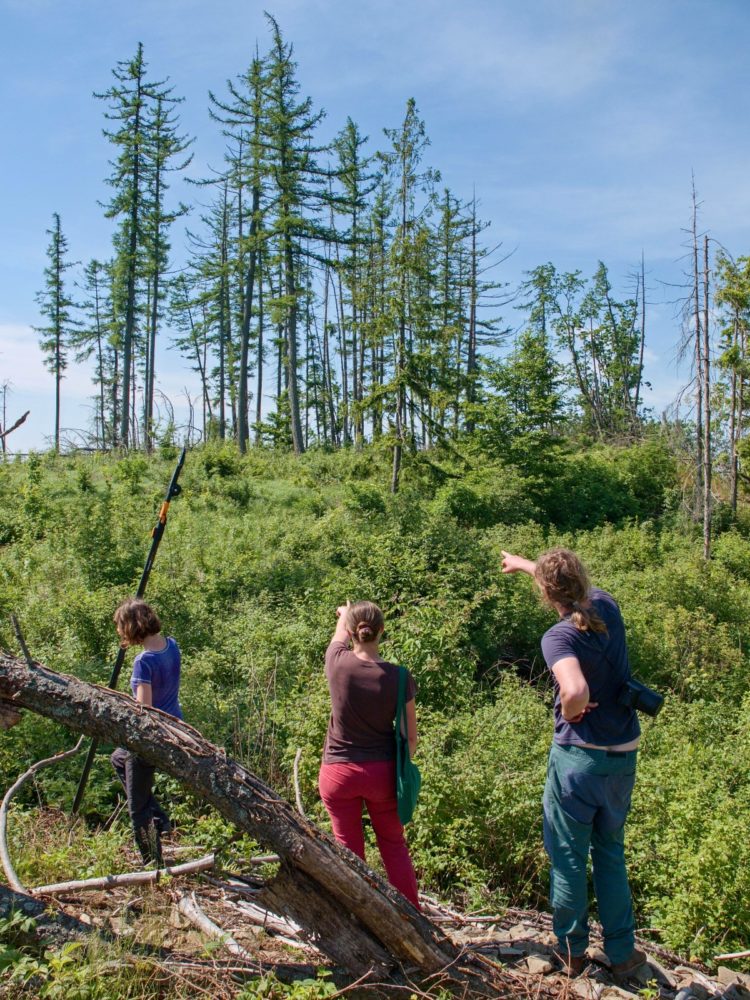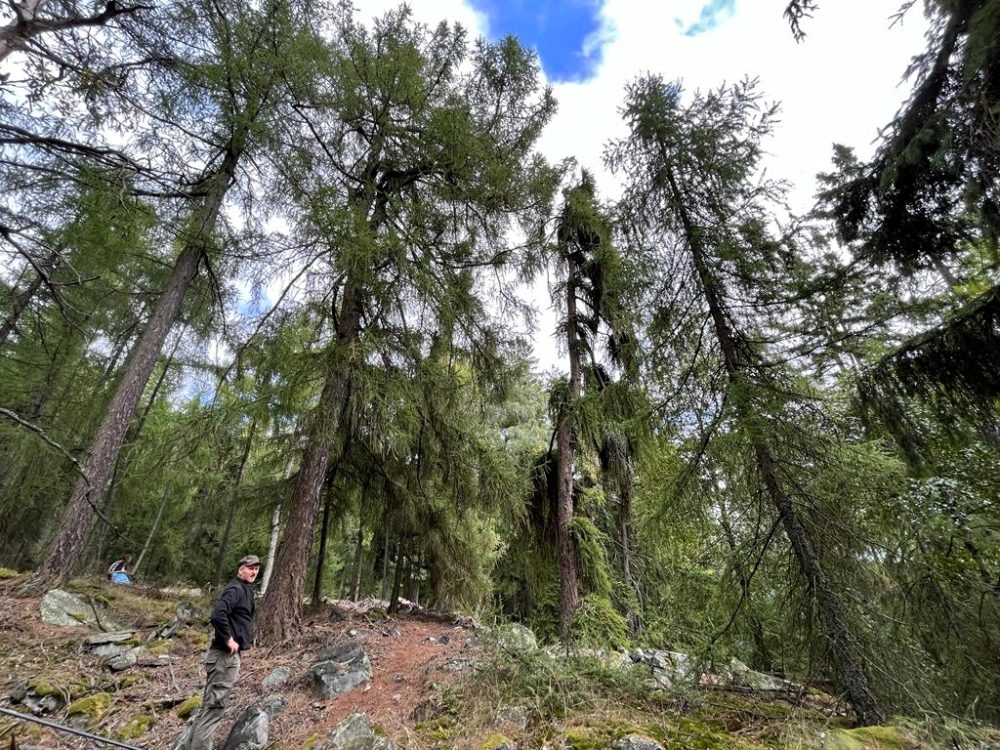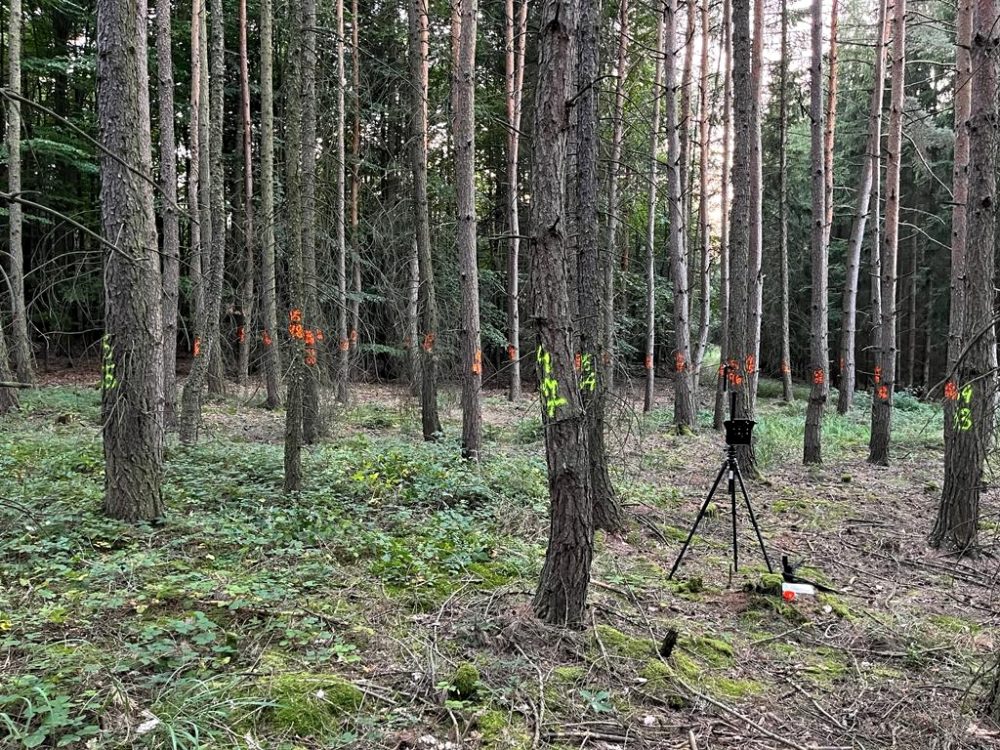Is European larch in the Nízký Jeseník Mts. really of the Jeseníky type?
 European larch is a very well known, unique and important conifer species both from biological and economic perspective. In spite of this, there is still a lot of unknown around it. This tree species autochthonous status in the Czech Republic, which has been long assumed based on forestry historical research in the Nízký Jeseník Mts. and surroundings, was proved just recently first by molecular genetics methods.
European larch is a very well known, unique and important conifer species both from biological and economic perspective. In spite of this, there is still a lot of unknown around it. This tree species autochthonous status in the Czech Republic, which has been long assumed based on forestry historical research in the Nízký Jeseník Mts. and surroundings, was proved just recently first by molecular genetics methods.
The LARIXUTOR project (https://www.poznejmodrin.cz/) aims to discover the origin of European larch in the Czech Republic. As part of this project, scientists conducted a molecular-genetic study to investigate the origin of European larch in the Nízký Jeseník Mountains. They published their findings in the article “Is European larch in the Nízký Jeseník Mts. really of the Jeseníky type? A perspective of molecular methods” („Je modřín opadavý v Nízkém Jeseníku opravdu jesenický? Pohled molekulárních metod“) in the journal Reports of Forestry Research 4/2024. Its authors are Martin Prach, Tomáš Fér, Charles University; Pavel Bednář, FGMRI, Research Station Opočno (VÚLHM, v. v. i., VS Opočno).
Photo: Černý les locality in the Nízký Jeseník Mts., author Jindřich Prach
Their primary objective was to analyze the genetic diversity of European larch populations and place them in a broader genetic context within the entire European region where larch is distributed. This analysis aimed to determine the extent to which native European larch populations exist in the area and how they are affected by the introduction of genetic material from other sources.
The scientists conducted a study on the genetic variability and structure of several European larch populations in the Czech Republic. They focused on the areas within the Nízký Jeseník Mts. and its surrounding regions. To analyze the genetic makeup of these populations, the scientists used nuclear microsatellite analysis. They gathered samples directly from the populations in the field for analysis.
Already in the late 19th century, researchers conducted comparative experiments on the silviculturing of larches of different origins. These experiments were useful in identifying the unique properties of Jeseníky Mts. larch, also known as the Sudeten larch ecotype.
The discussion about the taxonomic division of the highly variable larch and its natural distribution continued for a long time. To describe the variability of larch by traditional methods, both geographical origin and various morphological features, e.g. cone morphology, were used.
The methods of molecular genetics brought the possibility of a detailed description of the kinship of the investigated individuals, and thus also their inclusion in genetic groups. At the highest level, two main lines are separated – Alpine and Carpathian.
 Photo of European larch forest stand being taken during the project LARIXUTOR solution, author Pavel Bednář
Photo of European larch forest stand being taken during the project LARIXUTOR solution, author Pavel Bednář
In the Carpathian region, there are two groups of larch populations. One group is called the Jeseniky Mts. group, which includes mountain populations in Slovakia and Polish lowland populations. The other group consists of populations from Romania. These groups reflect the Holocene development of the larch area and correspond to the older taxonomic division of larch based on morphology and provenance.
Based on their research, scientists have confirmed that the Jeseníky Mts. larch is part of a genetically separate line and is abundant in populations in the Nízký Jeseník Mts. and its surroundings,
Their main finding indicates a relatively high rate of the genetic material of Alpine origin in the present-day larch populations in the Jeseníky Mts. The greatest degree of admixture is found in locations lying outside the original range of the Jeseníky Mountains’ larch ecotype. E.g. the population in the Borový locality is practically completely of Alpine origin (88%), and the Černý Les (50%) and Klapuše (36%) localities also have relatively high values.
Alpine genetic material is present in some protected areas where native European larch populations are preserved. The admixtures of Alpine larch are most prominent in Franz-Franz (38%) and Velký Roudný (25%) sites.
In the most known protected areas with Jeseníky Mts. larch ecotype populations (Preserves Ptačí Hora, Hůrky), there is level of introgression relatively low – from 8 to 15 %.
In the conclusion, scientists state:
Populations of European larch in and around the Nízký Jeseník Mountains, often considered a local ecotype, contain a relatively significant proportion of genetic material of Alpine origin.
 Photo of European larch forest stand being taken during the project LARIXUTOR solution, author Pavel Bednář
Photo of European larch forest stand being taken during the project LARIXUTOR solution, author Pavel Bednář
In most of the analyzed populations, the original Jeseníky Mts. larch genetic line still predominates, but at the same time, individuals of predominantly Alpine origin are found in all of them.
The presence of foreign genetic material in Jeseniky Mts. larch increases regional genetic diversity but inevitably also leads to the erosion of its original gene pool over time.
Especially in protected areas established for the protection of Jeseníky Mts. larch populations, it would be advisable to examine the genetic structure of these populations in greater detail, for their long-term effective protection.
Furthermore, it would be ideal to prevent the further spread of alpine admixture by gradually removing individuals of alpine origin and to strictly observing the use of planting material of verified provenance of larch from a tested source of reproductive material in the immediate vicinity.
The practical application of the recommended measures can be very complicated and expensive, but in the future, these measures may prove to be necessary for the preservation of the gene pool of the native European larch.
The paper was created with the support of the NAZV project QK21010335 – “Possibilities of using deciduous larch in Czech forests under the impact of GKZ” (LARIXUTOR) – /„Možnosti využití modřínu opadavého v českých lesích pod dopadem GKZ“/.
The paper “Is European larch in the Nízký Jeseník Mts. really of the Jeseníky type? A perspective of molecular methods” („Je modřín opadavý v Nízkém Jeseníku opravdu jesenický? Pohled molekulárních metod“) can be downloaded here.
According to the original, prepared by: Ing. Jan Řezáč, VÚLHM, v. v. i., e-mail: rezac@vulhm.cz
